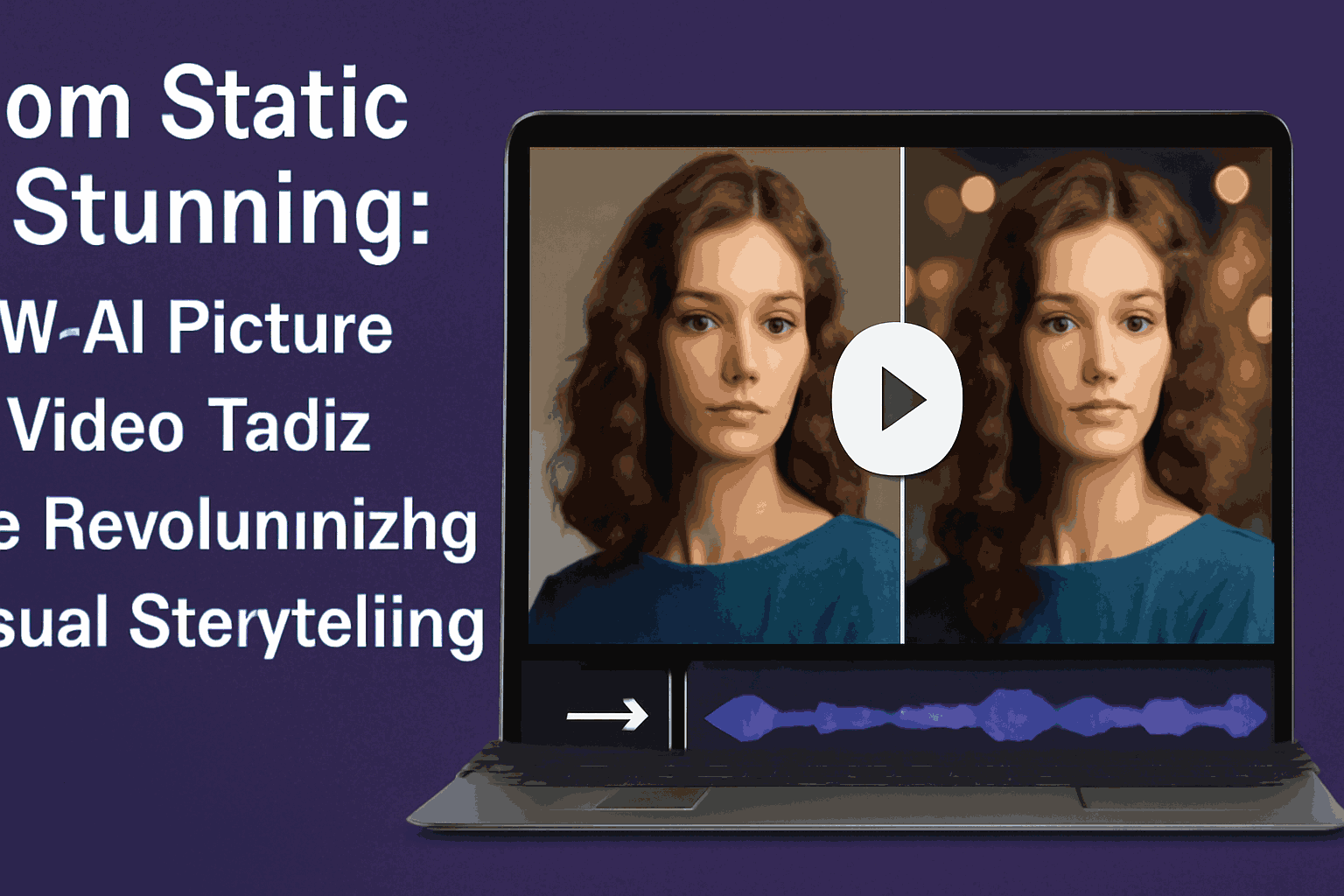In the fast-paced world of digital media, where attention spans are shorter than ever, static visuals often fail to make a lasting impression. This is where the magic of AI picture to video tools comes in. These innovative platforms breathe life into still images, turning them into dynamic, engaging video content that captures and holds your audience’s attention. Whether you’re a marketer, influencer, or business owner, these tools are reshaping how stories are told visually and making high-quality content creation more accessible than ever.
Why AI Picture to Video Tools Matter in 2025
AI-powered picture-to-video tools combine image processing, machine learning, and animation capabilities to convert static photos into moving visuals. The result? A captivating, video-driven narrative from what was once just a snapshot.
In today’s world of Instagram Reels, YouTube Shorts, and TikTok videos, video content dominates. It’s not just about grabbing attention, video also conveys emotion, context, and storytelling in ways static images can’t. AI tools eliminate the steep learning curve and time-consuming effort traditionally associated with video editing, allowing anyone to create professional-level visuals quickly.
1. Invideo AI – The Ultimate AI Picture to Video Powerhouse
When it comes to AI video creation, invideo AI leads the pack, especially for transforming images into engaging videos.
Invideo AI is an ai video app that enables creators to generate scroll-stopping videos from text, images, and even scripts all in just minutes. For anyone looking to use AI picture to video capabilities, this platform offers a seamless experience. You can upload still images, choose a style, select transitions, and let AI do the rest adding animations, effects, and even voiceovers.
Why Use Invideo AI?
- Automatic subtitles and music syncing
- AI voiceovers and text-to-video generation
As an AI video app, invideo AI offers powerful customization features—letting you control the pace, transitions, and text overlays to perfectly align with your brand tone. Whether you’re promoting a product, telling a story, or repurposing blog content into video, Invideo AI makes it efficient and free to get started.
2. CapCut – Social-First Editing with AI Enhancements
CapCut is another robust, user-friendly tool that helps turn images into lively videos with music, filters, and auto-captioning. Its AI-powered background remover and motion effects bring static visuals to life.
Though it’s best known for video editing, CapCut’s AI image-to-video features are perfect for creators aiming to build visually rich, social media-ready content quickly.
Highlights:
- AI motion and zoom effects
- Trend templates for Reels and TikTok
3. Runway – Artistic and Experimental Visuals Using AI
Runway offers an experimental edge for creators who want to go beyond standard templates. With their AI Magic Tools, you can animate photos, change image styles, or create surreal motion graphics from static content.
This is ideal for artistic storytelling, indie creators, and designers looking to produce unique video art without needing technical animation skills.
What Makes Runway Stand Out:
- Text-to-video and image animation options
- Real-time collaboration features
4. Animoto – Business-Friendly AI Picture to Video Platform
For businesses, Animoto is a great pick. It lets you create professional presentations, product videos, and promotional content using static images, slides, and brand assets.
It doesn’t require video editing skills and is particularly handy for small teams that want to share testimonials, behind-the-scenes photos, or product features in motion.
Best Features:
- Customizable templates with business themes
- Built-in stock media and music
5. Pictory – Turn Blog Posts and Photos into Videos
Pictory stands out for content repurposing. You can upload a blog or long-form text, and it will use AI to pull relevant images or let you upload your own, turning everything into a branded video.
It’s ideal for marketers, educators, and coaches who want to transform their static content libraries into engaging, shareable formats.
Key Benefits:
- Blog-to-video feature with voiceovers
- Bulk image-to-video support
How AI Picture to Video Tools Enhance Storytelling
Let’s look at what makes these tools revolutionary in terms of storytelling:
1. Emotion in Motion
Static photos can convey beauty, but movement adds emotion. A slow zoom, a fade-in, or a panning effect can evoke curiosity, joy, or nostalgia without words.
2. Narrative Building
Combining several photos with transitions and music builds a cohesive narrative arc. You can walk viewers through an event, showcase a process, or build a visual case study using just images.
3. Personalization
AI apps allow users to personalize content using branding elements like logos, taglines, and brand colors. It creates content that feels original and intentional essential in today’s saturated social feeds.
4. Speed and Scalability
Creating videos from scratch used to take hours. With AI video apps like Invideo AI, it now takes minutes. You can scale content creation across platforms without sacrificing quality.
Who Should Use AI Picture to Video Tools?
These tools are invaluable for:
- Social Media Managers: Create consistent, engaging visual content for multiple platforms
- E-commerce Brands: Turn product shots into attention-grabbing reels and ads
- Educators & Coaches: Make photo-based tutorials or student showcases
- Event Planners & Photographers: Animate event snapshots into memorable highlights
- Content Creators & Influencers: Repurpose images from photoshoots into trending videos
Final Thoughts
The evolution from static visuals to AI-generated videos marks a significant shift in content creation. These AI picture to video tools are not just time-savers they’re powerful storytelling engines that empower creators, marketers, and entrepreneurs to connect with their audience more vividly.
Invideo AI is a standout platform that blends ai video app functionalities with intuitive design, making it a must-try for anyone serious about visual storytelling.
If you’re still relying on static content in your digital strategy, now’s the time to bring your photos to life. The future of storytelling is dynamic and AI is making it stunning.
